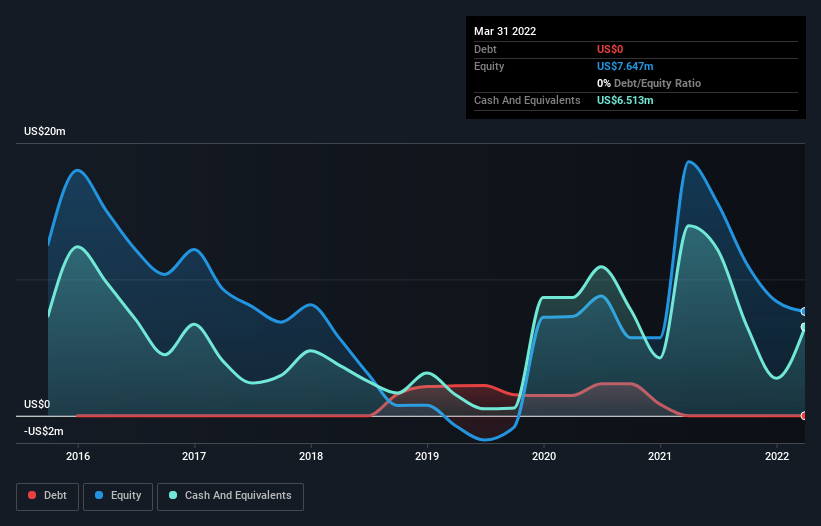There's no doubt that money can be made by owning shares of unprofitable businesses. For example, although Amazon.com made losses for many years after listing, if you had bought and held the shares since 1999, you would have made a fortune. Nonetheless, only a fool would ignore the risk that a loss making company burns through its cash too quickly.
Given this risk, we thought we'd take a look at whether $Applied DNA Sciences(APDN)$ shareholders should be worried about its cash burn. For the purpose of this article, we'll define cash burn as the amount of cash the company is spending each year to fund its growth (also called its negative free cash flow). First, we'll determine its cash runway by comparing its cash burn with its cash reserves.
When Might Applied DNA Sciences Run Out Of Money?
You can calculate a company's cash runway by dividing the amount of cash it has by the rate at which it is spending that cash. As at March 2022, Applied DNA Sciences had cash of US$6.5m and no debt. Looking at the last year, the company burnt through US$12m. Therefore, from March 2022 it had roughly 7 months of cash runway. That's quite a short cash runway, indicating the company must either reduce its annual cash burn or replenish its cash. You can see how its cash balance has changed over time in the image below.
 NasdaqCM:APDN Debt to Equity History August 3rd 2022How Well Is Applied DNA Sciences Growing?
NasdaqCM:APDN Debt to Equity History August 3rd 2022How Well Is Applied DNA Sciences Growing?
It was fairly positive to see that Applied DNA Sciences reduced its cash burn by 26% during the last year. But the operating revenue growth of 199% was even better. It seems to be growing nicely. While the past is always worth studying, it is the future that matters most of all. For that reason, it makes a lot of sense to take a look atour analyst forecasts for the company.
Can Applied DNA Sciences Raise More Cash Easily?
Even though it seems like Applied DNA Sciences is developing its business nicely, we still like to consider how easily it could raise more money to accelerate growth. Issuing new shares, or taking on debt, are the most common ways for a listed company to raise more money for its business. Commonly, a business will sell new shares in itself to raise cash and drive growth. We can compare a company's cash burn to its market capitalisation to get a sense for how many new shares a company would have to issue to fund one year's operations.
Applied DNA Sciences has a market capitalisation of US$25m and burnt through US$12m last year, which is 46% of the company's market value. That's high expenditure relative to the value of the entire company, so if it does have to issue shares to fund more growth, that could end up really hurting shareholders returns (through significant dilution).
Comments